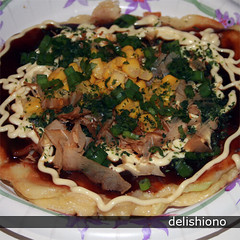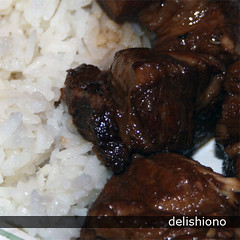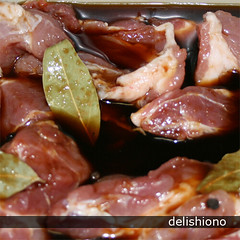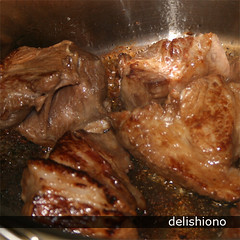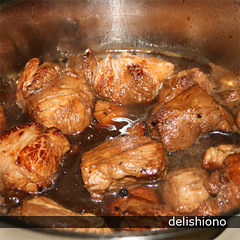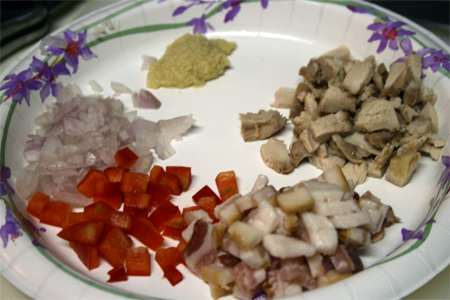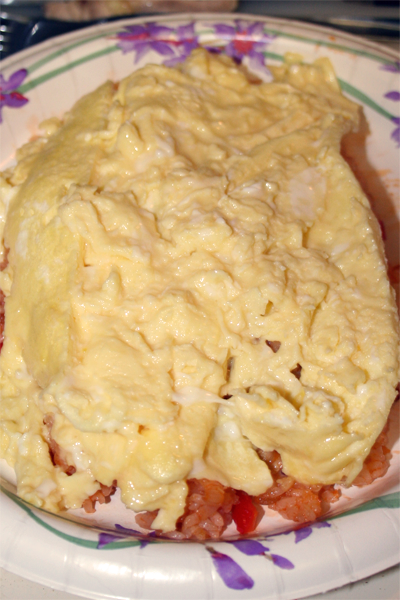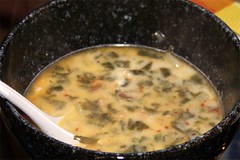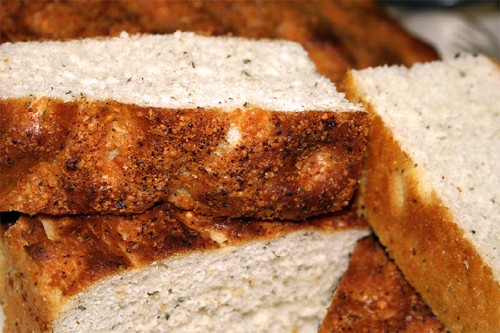But more than all this, I love the food! British food is often times snubbed for being plain and flavorless which I simply don't think is the case. Ren Faire's medieval setting tempts the palate with its no utensils eating with things like thick cut bread, cheese and sausage (yum) and gigantic turkey legs. Dickens Fair often has wonderful selections of meat pies, pasties, afternoon tea and other delights.
One of my favorites served at both events is the humble sausage roll. As I know it, the sausage roll is simply a bit of sausage meat, rolled in flaky pastry. I prefer mine plain however there's almost always a huge jug of either brown sauce or ketchup just waiting to accompany it.
Sadly, sausage rolls aren't popular in the US as they are in the UK or Australia where they are corner store staples. Fair season is usually limited to late summer/winter here which means that a sausage roll craving can go unfulfilled for quite awhile during the year. And with admission usually more than $20/per adult and food prices also being expensive, it's a bit impractical to go to a Fair just to eat. (And that doesn't include gas, travel time and parking!)
In order to fulfill a particularly bad craving for sausage rolls in the springtime, I set out to recreate the rolls on my own. Working off the assumption that sausage rolls are nothing more than an over glorified pigs in a blanket, I found myself with a tube of ready made cresent roll dough and a pack of pre-cooked British style bangers. (Excuse me while my inner 12 year old giggles stupidly. Hehehe. BANGERS.)
The resulting rolls were tasty but still not quite what I remembered. The buttery cresent rolls were yummy and the bangers had the exact flavor of the meat in the Fair rolls. However the sausage to pastry ratio was simply too much for me and the rolls weren't flaky. Still, they satisfied the craving and I filed away my love of sausage rolls for another time.
A few days ago, I found myself poking through AllRecipes.com and the featured recipe of the day was for someone's British-style sausage rolls. The recipe called for premade, uncooked sage sausage wrapped in puff pastry. I realized that was where I had gone wrong with the previous attempt. It should have been puff pastry! Duh. Needless to say, on my next shopping trip, I set out to buy the ingredients to attempt the sausage roll, again. This time I'm happy to report that I've made terrific success and I'm happy to pass the knowledge along to others.
Fair Style Sausage Rolls
Makes 8
- 1 box of pre-made puff pastry
- 1 pack of pre-cooked British-style sausage (Bangers)
- 1 egg, beaten
Preheat your oven to 400F
Cut your sausages in half lengthwise and remove the casing. Thaw your puff pastry as recommended on the box. When thawed, unfold and wrap each sausage half in pastry, pinching the edges to seal.
Line a baking sheet with parchment and then place pastry wrapped sausage onto the parchment. Brush the tops of the wrapped sausage with egg wash and bake for 20 minutes until golden brown. Cool for a few minutes before enjoying. These can be served warm or at room temperature.
To reheat refrigerated cooked sausage rolls: Bake at 300F for 20 minutes.
The rolls at Fair tend to cost somewhere in the neighborhood of $3 ~ $5 each. This recipe will make 8 at approximately $1.30 each. Not bad, eh?
For reference sake, I used Pepperidge Farm puff pastry and Saags British Bangers. Saags are pre-cooked and come four to a pack. British style bangers aren't easy to find where I live so I'm pretty much SOL if I wanted to find raw sausages.
The Pepperidge Farm package came with 2 sheets of puff pastry and I was able to wrap four halves in each sheet but I had to get pretty creative when it came to wrapping the sausages. Pepperidge Farm puff pastry comes folded into thirds and the folds remain visible even when unfolded. There was lots of pinching and sealing to be had come the last sausage in each sheet as well as supplement patches of pastry, trimmed from the other sausages. In the end, I couldn't tell what got patched where and honestly, didn't care. After all, these are meant to taste good and not win any aesthetic awards.
This recipe is pretty flexible and can be used with other pre-cooked sausages. I haven't tried it with uncooked sausage myself though I'm sure it can be done. I just like the pre-cooked sausages because it prevents the grease from getting into the pastry. :)
